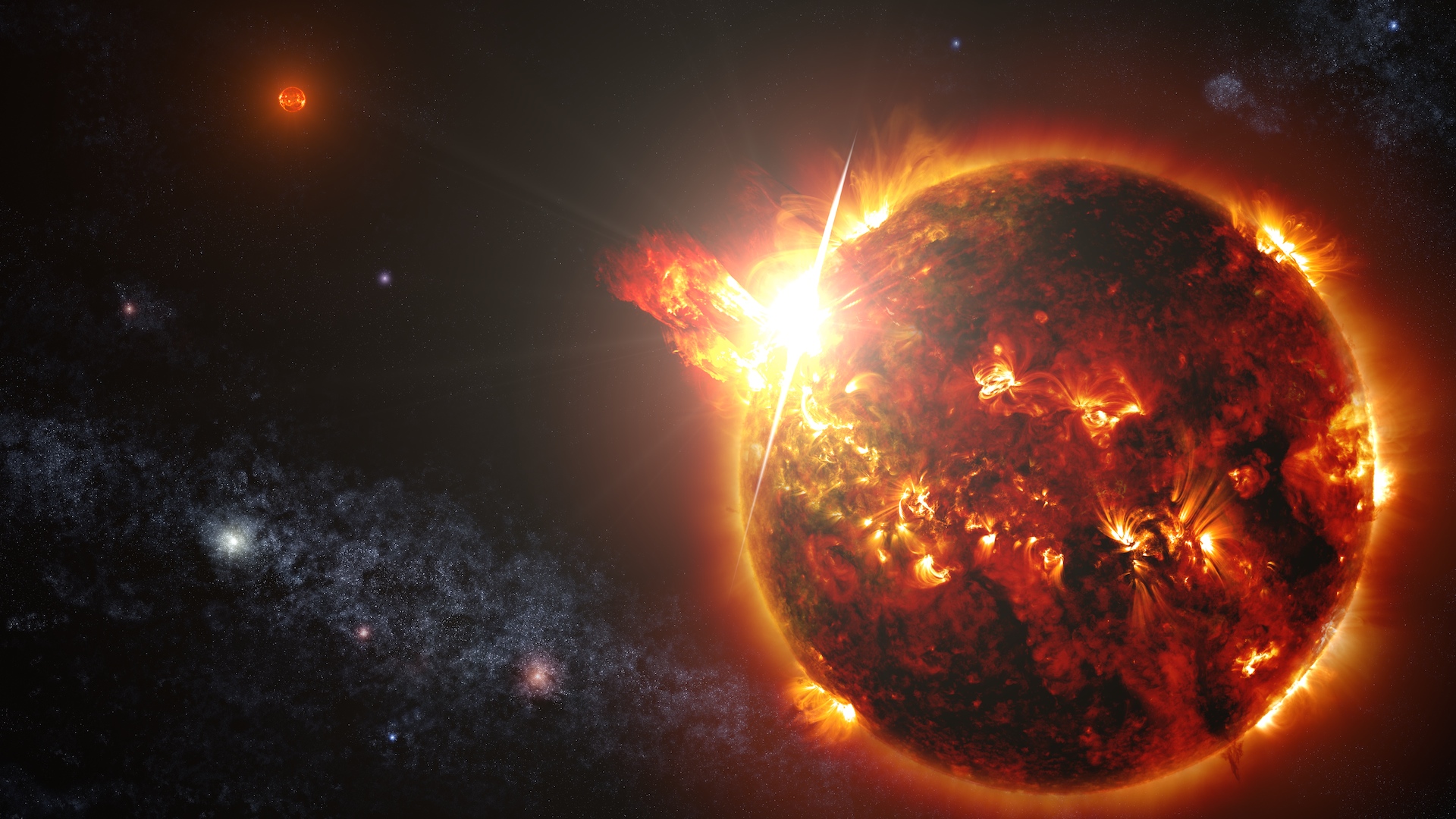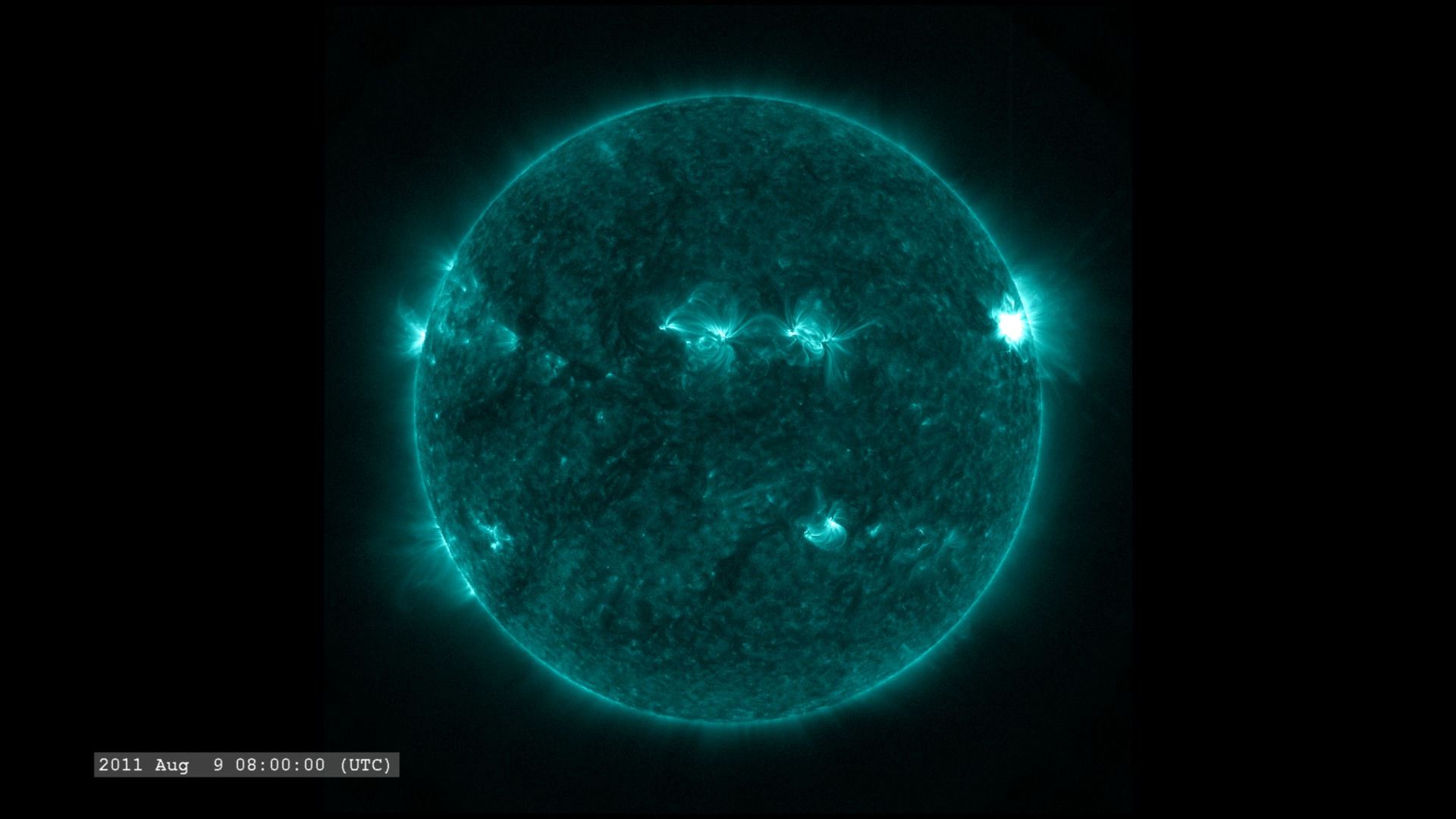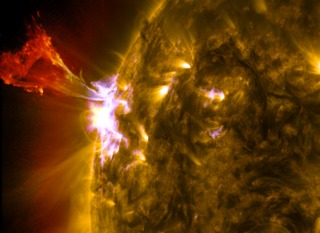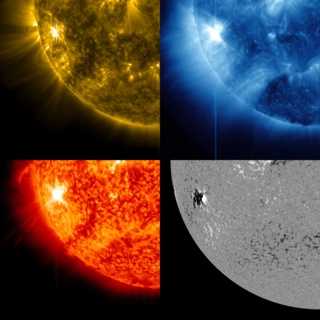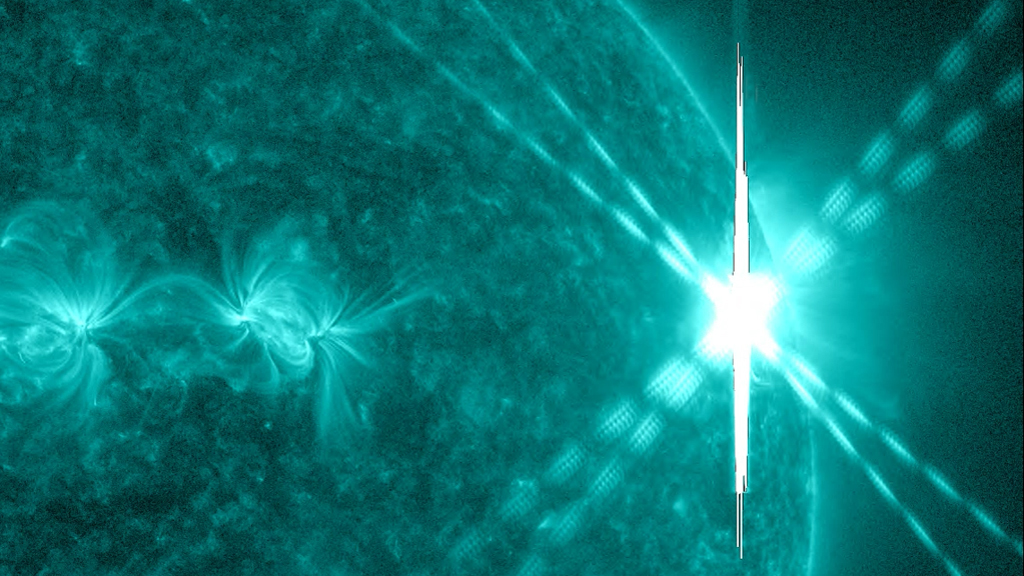X-Class: A Guide to Solar Flares
Flares happen when the powerful magnetic fields in and around the sun reconnect. They're usually associated with active regions, often seen as sun spots, where the magnetic fields are strongest. Flares are classified according to their strength. The smallest ones are B-class, followed by C, M and X, the largest. Similar to the Richter scale for earthquakes, each letter represents a ten-fold increase in energy output. So an X is 10 times an M and 100 times a C. Within each letter class, there is a finer scale from 1 to 9. C-class flares are too weak to noticeably affect Earth. M-class flares can cause brief radio blackouts at the poles and minor radiation storms that might endanger astronauts. Although X is the last letter, there are flares more than 10 times the power of an X1, so X-class flares can go higher than 9. The most powerful flare on record was in 2003, during the last solar maximum. It was so powerful that it overloaded the sensors measuring it. They cut-out at X17, and the flare was later estimated to be about X45. A powerful X-class flare like that can create long lasting radiation storms, which can harm satellites and even give airline passengers, flying near the poles, small radiation doses. X flares also have the potential to create global transmission problems and world-wide blackouts.
Short narrated video about flares, how they are classified, and their effect on Earth.
For complete transcript, click here.

Frame from movie showing the flare classification scale.

SDO AIA 304 image of February 15, 2011 X class flare.
Short animation showing the many wavelengths of the sun provided by SDO.
Credits
Please give credit for this item to:
NASA/Goddard Space Flight Center
-
Animators
- Scott Wiessinger (UMBC)
- Walt Feimer (HTSI)
- Chris Smith (HTSI)
- Tom Bridgman (Global Science and Technology, Inc.)
- Alex Kekesi (Global Science and Technology, Inc.)
-
Video editor
- Scott Wiessinger (UMBC)
-
Narrator
- Karen Fox (ADNET Systems, Inc.)
-
Producer
- Scott Wiessinger (UMBC)
-
Writers
- Scott Wiessinger (UMBC)
- Karen Fox (ADNET Systems, Inc.)
Release date
This page was originally published on Tuesday, August 9, 2011.
This page was last updated on Wednesday, May 3, 2023 at 1:53 PM EDT.
Series
This page can be found in the following series:Tapes
The media on this page originally appeared on the following tapes:-
X-Class: A Guide to Solar Flares
(ID: 2011023)
Tuesday, August 9, 2011 at 4:00AM
Produced by - Robert Crippen (NASA)
